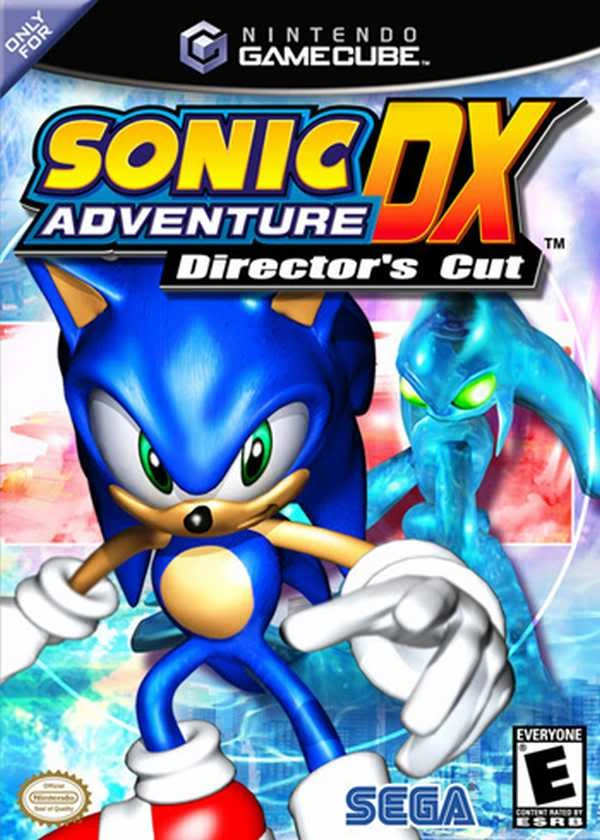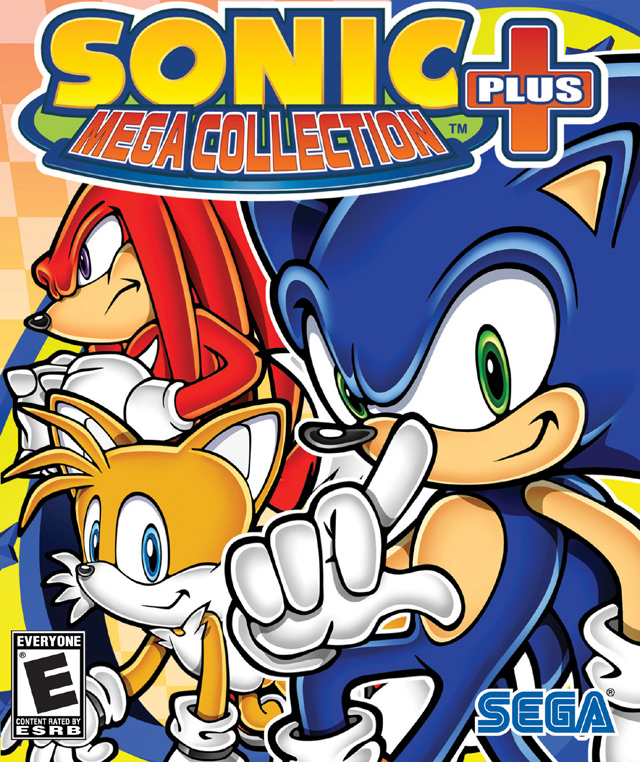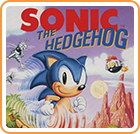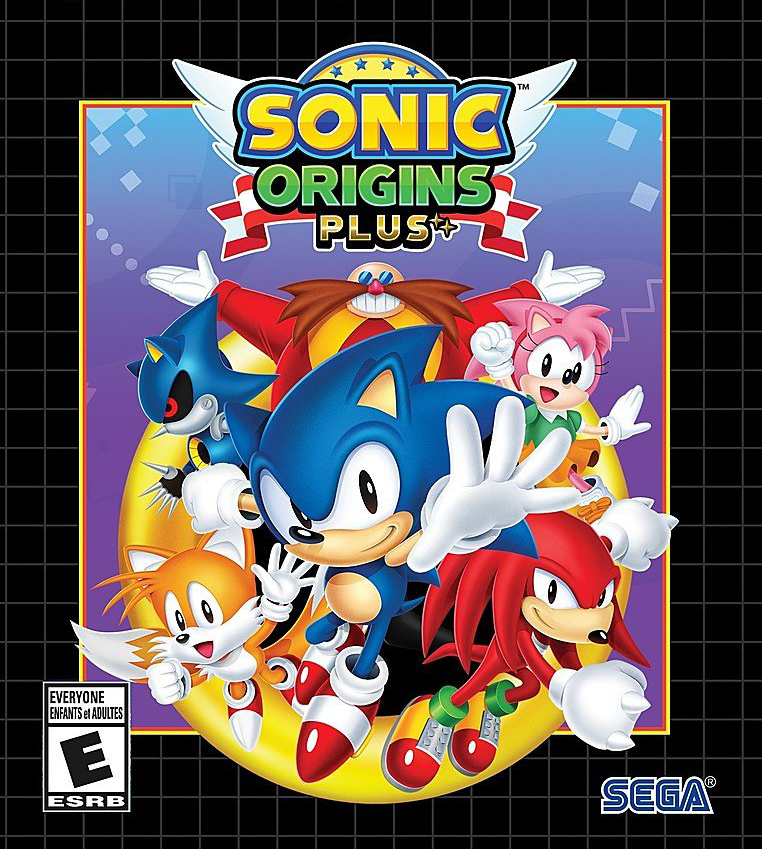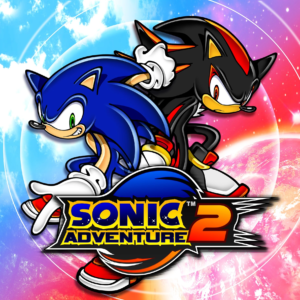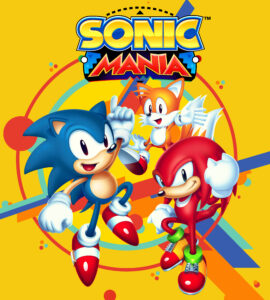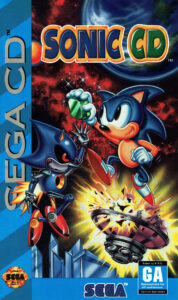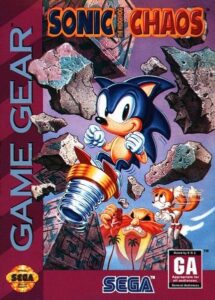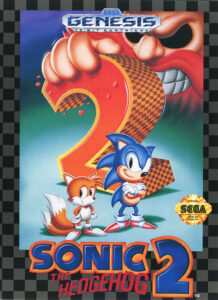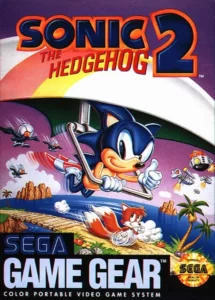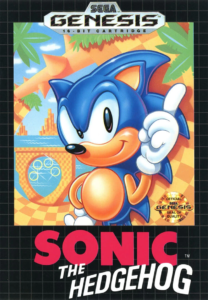in: Games, Main Series
Sonic the Hedgehog (8-bit)
Sonic the Hedgehog (ソニック・ザ・ヘッジホッグ Sonikku za Hejjihoggu) is a 2D platforming video game released in late 1991 for the Sega Master System and Sega Game Gear consoles. Developed by Ancient in collaboration with Sonic Team members, it serves as an 8-bit version of the original Sonic the Hedgehog, which was released on the Sega Mega Drive earlier that year, sharing a similar setting and other elements. The game introduced several new gameplay elements that would later be used in handheld titles.
Notably, the game features the renowned composer Yuzo Koshiro, known for his exceptional game music and chiptune compositions during the 1980s and 1990s. Koshiro rearranged many of Masato Nakamura’s iconic music tracks from the 16-bit version while also adding original content for the 8-bit version. Over the years, the game has been re-released on various compilation titles and as an unlockable mini-game, including re-releases on the discontinued Virtual Console service for the Wii and Nintendo 3DS.
Plot
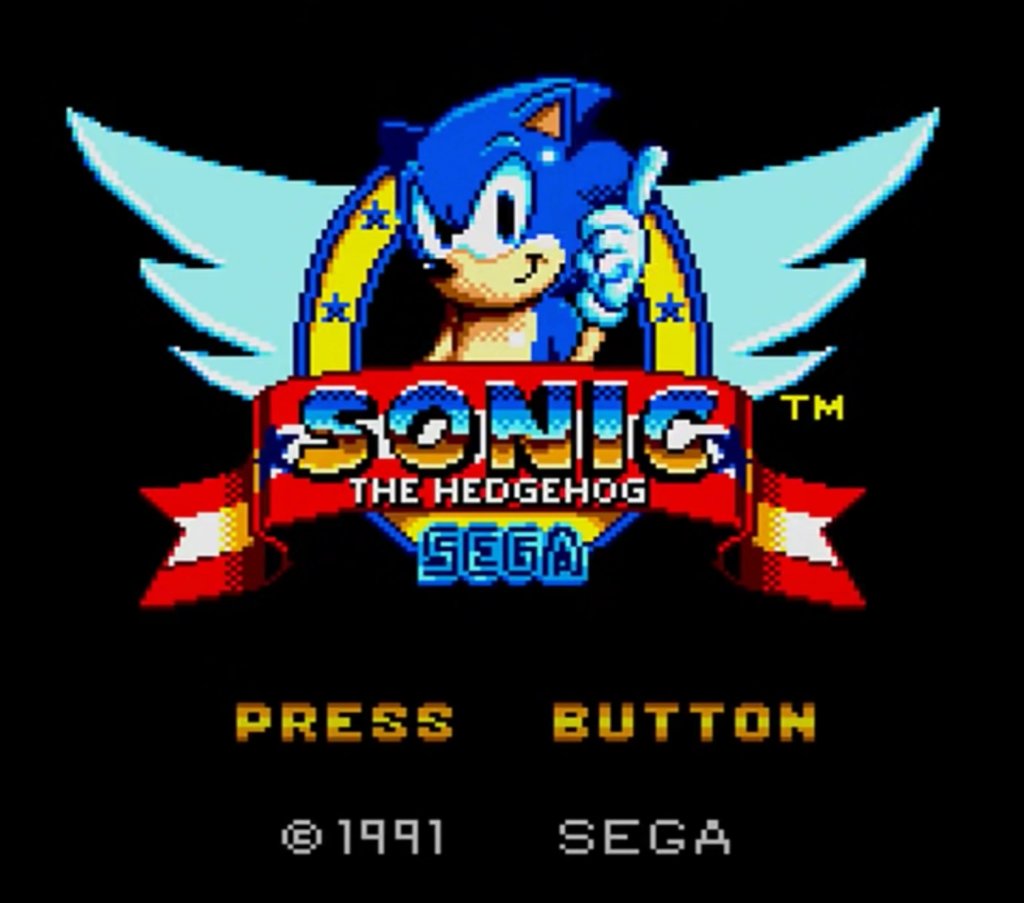
South Island is a lush tropical paradise filled with abundant vegetation, where Sonic the Hedgehog resides alongside his Animal friends. It is also rumored to be the resting place of the six mystical Chaos Emeralds, powerful gemstones capable of energizing all living beings or fueling destructive weapons through advanced science and technology.[1]Sonic the Hedgehog (Sega Game Gear) Japanese instruction booklet, pgs. 4-5.
The evil Dr. Ivo Robotnik, desiring the power of the Chaos Emeralds to conquer the world, invades South Island, captures the local Animals, and places them in Capsules. He sends his army of Badniks to search for the valuable gems. Learning of Robotnik’s sinister plan, Sonic embarks on a mission to stop him and safeguard the precious Emeralds.
After a series of adventures, Sonic confronts Dr. Robotnik in his stronghold, Scrap Brain. Although the doctor manages to escape to his blimp, the Sky Base, Sonic follows him and faces various challenges aboard the battleship. In a final showdown, Sonic defeats Robotnik and sends him fleeing to Green Hill using a teleporter. Pursuing his nemesis, Sonic lands a decisive blow on Robotnik’s Egg Mobile, determined to put an end to his evil schemes.
The game’s ending depends on the player’s progress throughout the adventure. If the player has not gathered all six Chaos Emeralds, they will see a results screen with their points before the credits. However, if the player has collected all the Emeralds, a powerful transformation occurs as the Emeralds fly above South Island, cleansing it from Robotnik’s pollution. The rest of the ending remains the same, celebrating Sonic’s triumph and the restoration of peace to South Island.
Gameplay

Sonic the Hedgehog is a classic side-scrolling platforming game with gameplay elements borrowed from its 16-bit counterpart. The objective is to complete each Act of a Zone (level) within ten minutes. Players control Sonic throughout the game, using maneuvers like the Spin Jump and Super Sonic Spin Attack.
Rings are scattered throughout each Zone, and collecting them provides protection from damage, except for drowning, falling into bottomless pits, or running out of time. When Sonic takes damage, he loses all his Rings, which are shown as a single Ring being dropped. If Sonic gets hit without any Rings, a life is lost, and the player must restart either from the beginning of the Act or the last Arrow Monitor. Losing all lives results in either the end of the game or a chance to continue from a saved point. Collecting Rings also earns points, and reaching 100 Rings grants an extra life while resetting the Ring counter to zero.
The game features Video Monitors that contain various power-ups, similar to the 16-bit version, including Super Rings (providing ten extra Rings), One-Ups, Shields (offering one hit protection), Power Sneakers (brief speed boost), and Invincibles (temporary invulnerability). Some power-ups are rarer than others. If the player completes an Act with a Shield, they keep it for the next Act. Additionally, there is a single One-Up Video Monitor in each Act, and collecting them all unlocks a bonus last One-Up monitor in the third Act. Another exclusive feature is the Arrow Monitors, which save the player’s progress in an Act when broken, functioning similarly to Lampposts in the 16-bit version.
The game also introduces Bonus Panels at the end of the first two Acts of a Zone and in the Special Stages. These panels spin and award prizes based on the displayed image. In Special Stages, Bonus Panels always contain a Robotnik bonus when flipped. The rewards include:
| Image | Name | Reward |
|---|---|---|
| Question mark (default) | Nothing | |
| Dr. Robotnik | Nothing | |
| Sonic | One-Up | |
| Ring | 10 Rings | |
| Exclamation point | Access to the Special Stage |

Due to the limited capabilities of the Sega Master System and Sega Game Gear, the level design in Sonic the Hedgehog is much more straightforward compared to its 16-bit counterpart. There are no loop-de-loops or alternate pathways, and the gameplay primarily revolves around basic side-scrolling platforming. Players can gain momentum by utilizing slopes, Springboards, and ramps. However, this simplicity doesn’t mean the game lacks challenges; in fact, it offers various obstacles and level gimmicks, making it quite challenging.
Throughout the levels, players can also find the hidden Chaos Emeralds. In one of the two main Acts of each Zone, there is a hidden Chaos Emerald waiting to be collected. Gathering all six of these emeralds has two effects: it impacts the game’s cinematic ending and grants the player extra points. Successfully locating and collecting these emeralds adds an additional layer of exploration and accomplishment to the gameplay.
Scoring System
Main article: Point
In the Master System version of Sonic the Hedgehog (8-bit), players can earn various points and bonuses throughout the game:
- Every 50,000 points: Earn an extra life (1-Up).
- Hitting Badniks: Gain 100 points.
Final Score Tally:
- Total scores: 50,000 points per cleared Act.
- Remaining lives: 5,000 points per life.
- Chaos Emerald: 20,000 points per collected Chaos Emerald.
End-of-Zone Tally:
- Ring Bonus: Gain 100 points per collected Ring
- Time Bonus:
- < 0:29: Earn 30,000 points.
- 0:30 – 0:59: Earn 10,000 points.
- 1:00 – 1:29: Earn 5,000 points.
- 1:30 – 1:59: Earn 3,000 points.
- 2:00 – 2:29: Earn 1,000 points.
- 2:30 – 2:59: Earn 500 points.
- > 3:00: Earn 0 points.
In the Game Gear version of Sonic the Hedgehog (8-bit), players can also earn points and bonuses:
- Every 50,000 points: Gain an extra life (1-Up)
Special Stages Tally:
- Ring Bonus: Earn 100 points per collected Ring
End-of-Act Tally:
- Ring Bonus: Earn 100 points per collected Ring
- Time Bonus
- < 0:19: Earn 300,000 points.
- 0:20: Earn 200,000 points.
- 0:21: Earn 100,000 points.
- 0:22: Earn 80,000 points.
- 0:23: Earn 50,000 points.
- 0:24: Earn 40,000 points.
- 0:25 – 0:29: Earn 30,000 points.
- 0:30 – 0:59: Earn 10,000 points.
- 1:00 – 1:29: Earn 5,000 points.
- 1:30 – 1:59: Earn 3,000 points.
- 2:00 – 2:29: Earn 1,000 points.
- 2:30 – 2:59: Earn 500 points.
- 3:00 – 4:59: Earn 100 points.
- > 5:00: Earn 0 points.
Controls
Objects
Items
- Chaos Emerald
- Ring
- Video Monitor
- Arrow Monitor
- Continue Monitor
- Invincible
- One-Up
- Power Sneakers
- Super Ring
- Shield
Gimmicks and Obstacles
- Air bubble
- Bonus Panel
- Bumper
- Bumper Pillar
- Conveyor Belt
- Electric beam
- Fireball
- Flipper
- Giant spear
- Iron ball
- Metal Cage
- Seesaw
- Spikes
- Springboard
- Switch
Characters
Zones

Sonic the Hedgehog comprises six Zones, each consisting of three Acts. The first two Acts involve standard platforming challenges, while the third Act is shorter and ends with a boss battle against Dr. Robotnik. The third Act is unique as it does not contain any Rings. Upon defeating a boss, the player must open the Metal Cage to free the trapped Animals before progressing to the next Zone. The game includes well-known Zones from the 16-bit version and introduces several original ones:
- Green Hill Zone
- Bridge Zone
- Jungle Zone
- Labyrinth Zone
- Scrap Brain Zone
- Sky Base Zone
Special Stages
Main article: Special Stage (Sonic the Hedgehog) (8-bit)
The Special Stages are additional levels that can be accessed by passing Bonus Panels with at least 50 Rings. Unlike in the main game, the Chaos Emeralds cannot be obtained in these stages. Instead, the Special Stages serve as bonus levels for collecting Rings to earn extra lives and Continues within a limited time frame. These Stages are set in large rooms filled with numerous Rings and various bouncing gimmicks, such as Bumpers, Springs, and Flippers.
Bosses
Green Hill Zone boss (Green Hill Zone)
Bridge Zone boss (Bridge Zone)
Jungle Zone boss (Jungle Zone)
Labyrinth Zone boss (Labyrinth Zone)
Sky Base Zone boss (Sky Base Zone)
Soundtrack
Yuzo Koshiro, who was previously a freelance composer for Sega, created the original chiptune music for Sonic the Hedgehog. Additionally, he rearranged the variations of Masato Nakamura’s original music tracks from the 16-bit version of the game. Masato Nakamura is credited as the sound producer of this 8-bit game.
Reception
The 8-bit version of Sonic the Hedgehog, like its 16-bit counterpart, received positive reviews from gaming journalists and magazines upon its release. Computer and Video Games praised its speed, gameplay, and graphical detail, though they noted that the game was relatively easy. Mean Machines Sega also praised the graphics, speed, and favorable comparison to the Sega Mega Drive version. GamePro similarly commended the Master System version for its speed and graphics.
The 2013 re-release of the game received an 8 out of 10 score from Nintendo Life, lauding its tight controls, sense of speed, and unique personality, calling it a “speedy, smile-inducing classic.” IGN reviewed the Wii Virtual Console re-release and found it less visually appealing and ambitious than its 16-bit counterpart but still a competent game with unique level designs that retained the original’s feel. GameSpy, while reviewing Sonic Mega Collection Plus, identified the 8-bit Sonic the Hedgehog and Sonic Chaos as the only Game Gear installments in the series worth playing.[2]Baker, Chris (1 November 2004). Sonic Mega Collection Plus (PS2). GameSpy. Retrieved on 19 January 2019.
Sonic the Hedgehog also earned the fourth place on GamesRadar’s “Best Sega Game Gear games of all time” list, with praise for its testing of reflexes in later levels and understanding the game’s early limitations in terms of speed, making it a forgivable aspect.[3]Best Sega Game Gear games of all time. GamesRadar (6 March 2014). Retrieved on 1 November 2015.
Re-releases

Sonic the Hedgehog, like many later Sega Master System and Game Gear games, has been featured on numerous re-releases and compilation titles. The Game Gear version can be found as a mini-game in Sonic Adventure DX: Director’s Cut for the Nintendo GameCube and PC, unlocked by completing the first 20 missions or collecting 20 Emblems. In the same year, it was ported to Palm OS phones under the Sega Mobile banner. The Game Gear version also appeared in the compilation game Sonic Mega Collection Plus in 2004.
In 2008, the Master System version of Sonic the Hedgehog was included in Tectoy’s officially licensed plug and play console, “Tectoy Master System 3.” It was also re-released on the Virtual Console for the Wii at the price of 500 points. Later, in 2013, the Game Gear version was re-released on the Virtual Console for the Nintendo 3DS at the price of 300 points.[4]Four New Game Gear Titles for the Nintendo 3DS eShop. Sega Blog. Sega (13 June 2013). Archived from the original on 18 June 2013. Retrieved on 1 November 2014.
Additionally, in 2020, the Game Gear version made its way to the black Game Gear Micro. These various re-releases and inclusions in compilation titles have allowed fans to revisit and enjoy Sonic the Hedgehog on different platforms over the years.
Console Differences
The Sega Master System and Game Gear versions of the game are mostly the same, with some differences due to hardware limitations. These include:
- The Game Gear version has an intro screen with a jumping Sonic sprite, which is absent in the Master System version as it is provided by the console’s BIOS.
- Due to the Game Gear’s smaller screen resolution and increased color palette, the game’s screen size was narrowed. As a result, Sonic’s sprite was made smaller, and his controls were adjusted to be tighter.
- There are minor graphical changes in Green Hill Zone, such as the removal of one totem pole face in the Game Gear version. The flowers resemble their 16-bit counterparts, and warning signs are added in certain areas to accommodate the narrow screen and game momentum.
- The Special Stages in the Game Gear version have all the sprites in the same color, unlike the Master System version where each color indicates a different bouncing height.
- In Jungle Zone Act 2 of the Game Gear version, players can descend vertically without losing a life, making the Zone easier.
- Labyrinth Zone’s level design was mostly redone in the Game Gear version, and its Chaos Emerald was relocated.
- Two bosses were heavily modified in the Game Gear version. For instance, the Bridge Zone boss appears on a tricky curvy bridge, and the final boss in Sky Base Zone Act 3 has a completely different defense mechanism and does not enter a “panic” mode.
- Due to the screen size, each boss fight takes place in more compact arenas in the Game Gear version, resulting in every other boss being lowered.
- The ending credits in the Master System version have alternative text (“Game Program” and “Sound Produce”) and include extra credit for the original character design.
Staff
Trivia
- In North America, Sonic the Hedgehog is the only Sonic game released for the Sega Master System. Later Sonic-themed titles were released on the Sega Game Gear and programmed as ports for the Master System, but these were only released in Europe, South America, and South Africa.
- Despite the box artwork for the Sega Master System version showing Sonic inside a loop in Green Hill, there are no loops in this game. Loops were introduced in the 8-bit version of Sonic the Hedgehog 2.
- Although the plot of this game appears to be identical to the 16-bit version, it is a separate adventure that occurs independently from the 16-bit game.[5]BumbleKast for July 27th, 2022 – Priority Q&A Podcast with Ian Flynn (23:34). YouTube (27 July 2022). Retrieved on 27 July 2022.
Archive Links





References
- ↑ Sonic the Hedgehog (Sega Game Gear) Japanese instruction booklet, pgs. 4-5.
- ↑ Baker, Chris (1 November 2004). Sonic Mega Collection Plus (PS2). GameSpy. Retrieved on 19 January 2019.
- ↑ Best Sega Game Gear games of all time. GamesRadar (6 March 2014). Retrieved on 1 November 2015.
- ↑ Four New Game Gear Titles for the Nintendo 3DS eShop. Sega Blog. Sega (13 June 2013). Archived from the original on 18 June 2013. Retrieved on 1 November 2014.
- ↑ BumbleKast for July 27th, 2022 – Priority Q&A Podcast with Ian Flynn (23:34). YouTube (27 July 2022). Retrieved on 27 July 2022.
External Links
- Sonic the Hedgehog at the official Wii re-release mini-site (Japanese)
- Sonic the Hedgehog at the official Nintendo 3DS re-release mini-site (Japanese)
- Sonic the Hedgehog (8-bit) at Wikipedia, the free encyclopedia
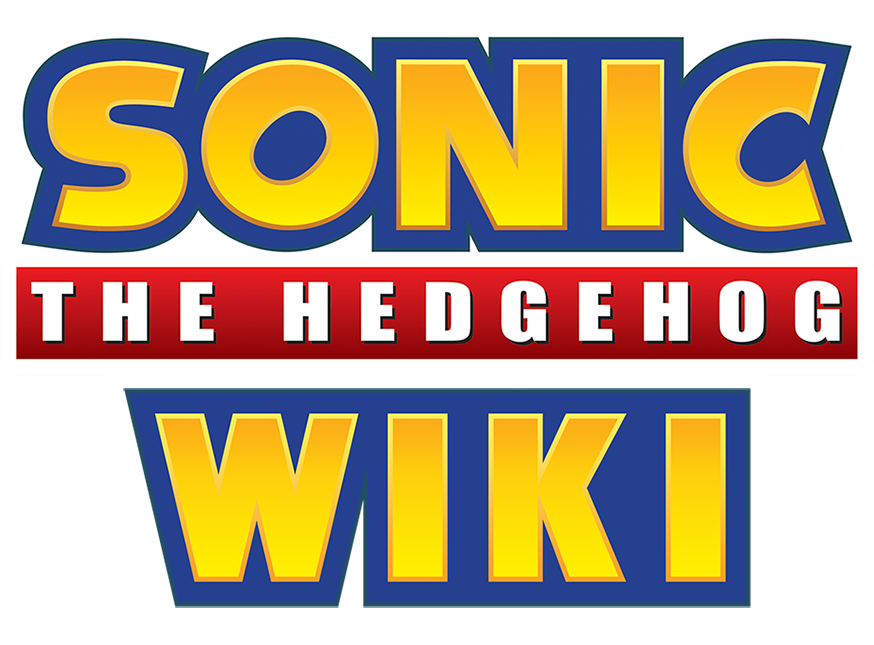

 Movement
Movement